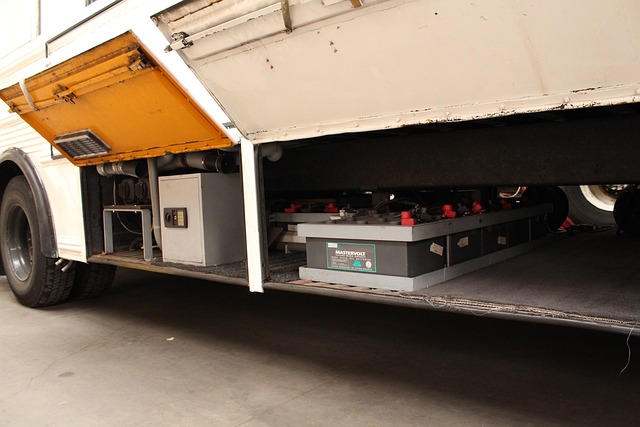Looking to register your car in California? Navigating the process can seem daunting, but understanding each step ensures a smooth experience. This comprehensive guide breaks down the California car registration process, focusing on crucial aspects like gathering necessary documents for VIN verification and conducting the verification itself. By following these steps, you’ll be ready to submit your application with confidence.
- Understanding the California Car Registration Process
- Gather Necessary Documents for VIN Verification
- Step-by-Step Guide to Conducting VIN Verification
- After VIN Verification: Submitting Your Application
- Important Considerations and Frequently Asked Questions
Understanding the California Car Registration Process

Understanding the California Car Registration Process
Registering a car in California involves several steps designed to ensure vehicle safety and roadworthiness. The process begins with a thorough inspection, including a crucial step known as VIN verification (Vehicle Identification Number). This step is essential to confirm the vehicle’s authenticity and history, which can be efficiently handled by utilizing services like mobile vin inspection or a mobile vin verifier. By providing your car’s unique VIN, authorities cross-reference it against national databases to check for any outstanding issues, accidents, or thefts, ensuring that the vehicle meets all legal requirements before issuing a registration certificate.
After passing the initial inspection, you’ll need to gather essential documents, such as proof of insurance, proof of ownership, and a valid driver’s license. With these in hand, you can visit a California Department of Motor Vehicles (DMV) office or utilize their online services to complete the registration process. This may include paying the required fees and passing an emissions test if applicable. Once all requirements are met, your car will be officially registered, allowing you to legally operate it on California roads.
Gather Necessary Documents for VIN Verification

Before registering your car in California, you’ll need to gather several crucial documents for a VIN (Vehicle Identification Number) verification process. This step is essential as it ensures that your vehicle meets all legal requirements and standards before hitting the state’s roads. For this procedure, you’ll require the vehicle’s title, which can be obtained from the previous owner or through a legitimate source if you’re buying a new car. Additionally, you must provide proof of insurance, often in the form of an insurance card or a letter from your insurer.
Another vital document for a successful VIN inspection is a valid driver’s license or state ID. This ensures that you, as the registrant, can legally operate the vehicle on California’s highways. Some states also require a completed application form specifically designed for car registration. Ensure this form includes all necessary details about the vehicle and your personal information to facilitate the registration process. For a streamlined experience, consider using a mobile vin verifier for quick and accurate verification during the registration process.
Step-by-Step Guide to Conducting VIN Verification

To ensure a smooth car registration process in California, conducting a Vehicle Identification Number (VIN) verification is a crucial step. Here’s a step-by-step guide to help you through this process. Begin by locating your vehicle’s VIN, typically found on a plate near the driver’s side door or under the hood. Next, validate the VIN with the California Department of Motor Vehicles (DMV) using their official online tools or by visiting a local DMV office. This verification step ensures that your vehicle’s details match the records and helps prevent fraud.
For added convenience, consider utilizing mobile vin verification services. These services allow you to perform a vin inspection remotely, saving you time and effort. Simply use your smartphone or tablet to input the VIN and access real-time data from reputable sources. This alternative approach can be particularly useful if you’re preparing for registration from home or need to verify a vehicle quickly before making a purchase decision.
After VIN Verification: Submitting Your Application

After passing the VIN verification process, the next step is to submit your application for car registration. This involves gathering all necessary documents and filling out the appropriate forms. It’s crucial to ensure that all information is accurate and up-to-date. The California Department of Motor Vehicles (DMV) will review your application, verify your identity, and check for any outstanding issues or fees.
Once your application has been approved, you can proceed with paying the registration fee. You can typically do this at a local DMV office or, in some cases, online. After completing the payment, you’ll receive your vehicle’s registration documents, which include important details about your car and legal requirements for its operation on California roads. Additionally, consider utilizing mobile vin inspection services for a convenient and efficient way to ensure a smooth registration process.
Important Considerations and Frequently Asked Questions

Before diving into the registration process, there are several important considerations to keep in mind when registering a car in California. Firstly, ensure that your vehicle meets all safety and emission standards set by the state. This includes passing a smog test, which verifies your car’s exhaust system and emissions levels. Another crucial aspect is obtaining the Vehicle Identification Number (VIN) verification. A VIN inspection ensures the accuracy of your vehicle’s information, which is essential for legal compliance. Consider opting for a mobile VIN verification service to save time and effort; these services bring the inspection directly to you, whether at home or work.
Frequently Asked Questions (FAQs) also play a vital role in clearing doubts. For instance, many California residents wonder about the requirement for an inspection after purchasing a used car. In such cases, a mobile VIN inspection can be particularly useful. It allows you to verify the vehicle’s history and condition before completing the registration process. Additionally, questions related to registration fees and documents needed are common; ensure you have all necessary paperwork, including proof of insurance and ownership, to streamline the registration experience.
Registering a car in California involves several key steps, with VIN verification as a crucial component. By understanding the process, gathering the required documents, and accurately completing each step, including successful VIN verification, you can ensure a smooth and efficient registration experience. Remember to refer back to these guidelines if you have any questions or need clarification during the application process.



